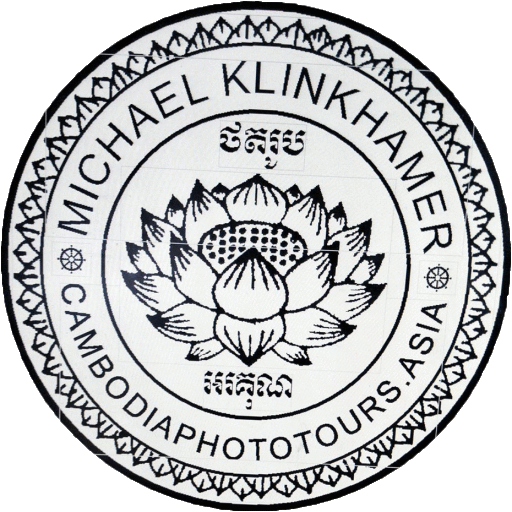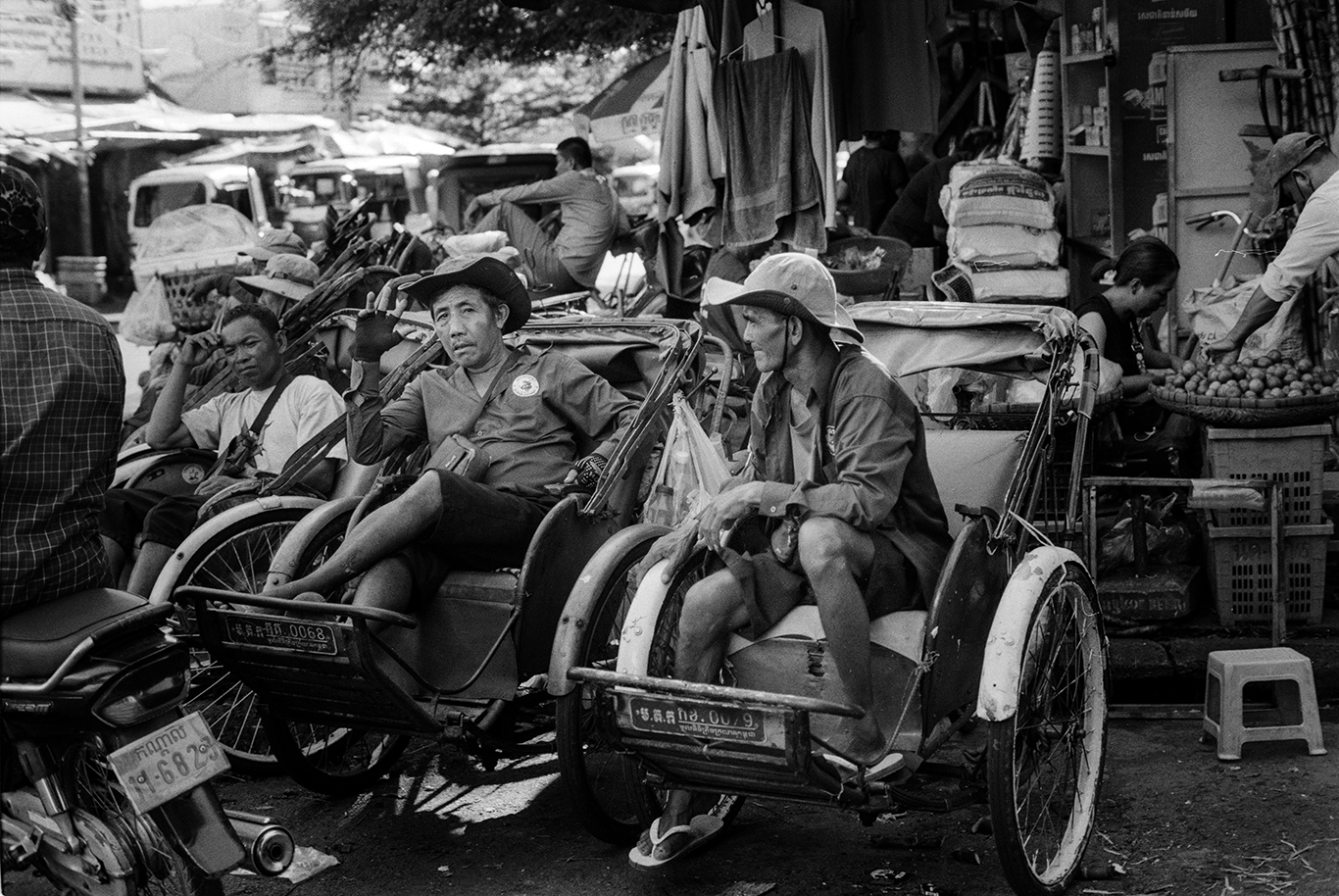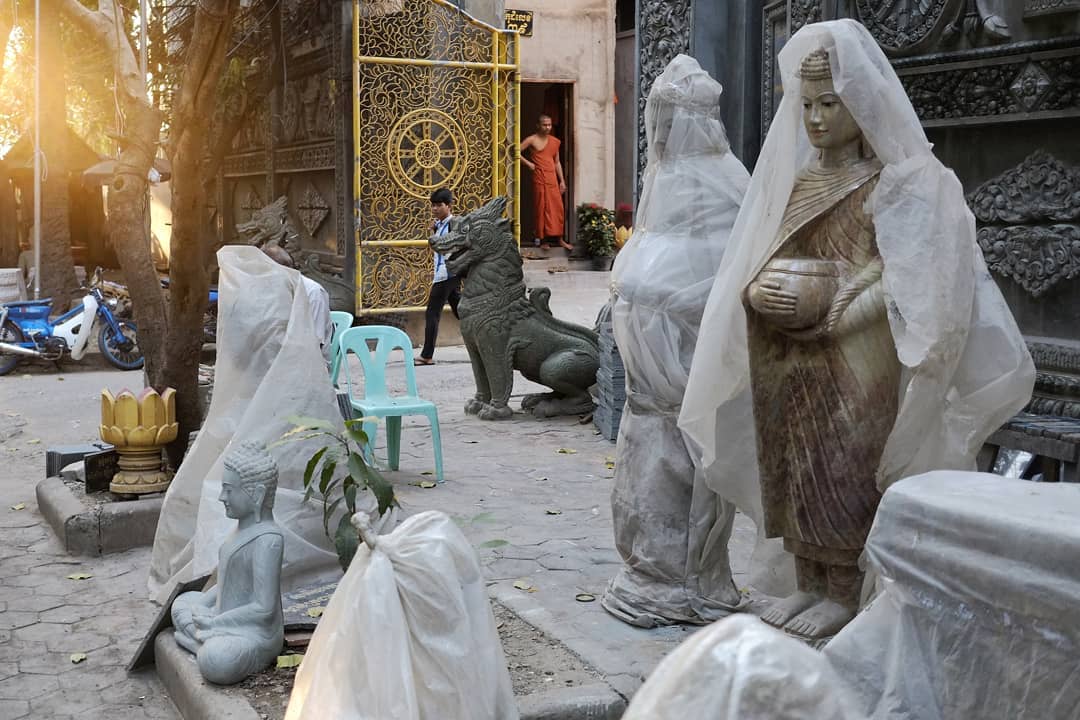
The definition of street photography is often debated.
For me, it means, at its core; taking non staged spontaneous pictures of people within their environment in a city or within a place.
By doing so showing a fleeting moment caught in time.
A moment frozen in time that will never happen again, exactly like that what you record in that split second in time. In a 125th of a second.
From 2013 onwards I am fortunate to run photo walk experiences and workshops in Cambodia. Mainly for visiting travellers, who hire me to teach them camera techniques and take them out for a day ‘off the beaten track’ and enter the exciting world of “Street photography”.
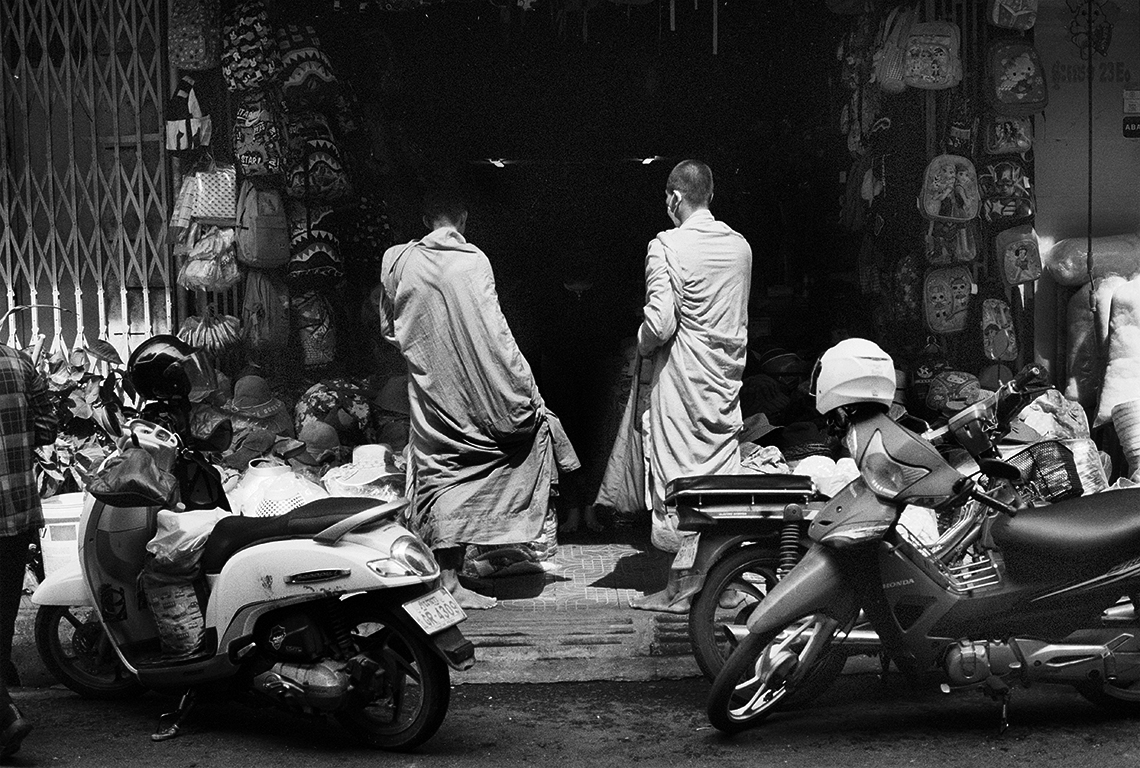
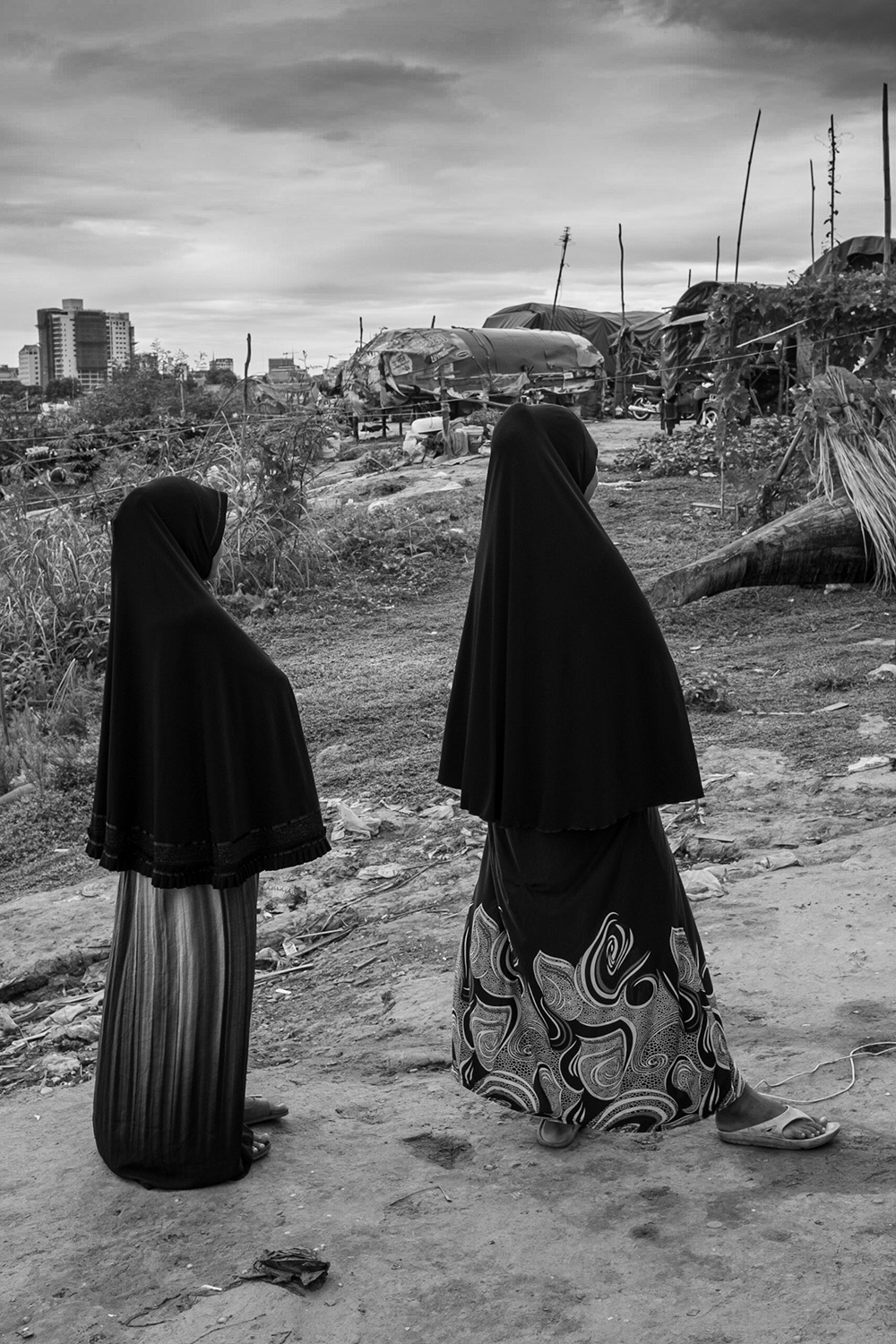
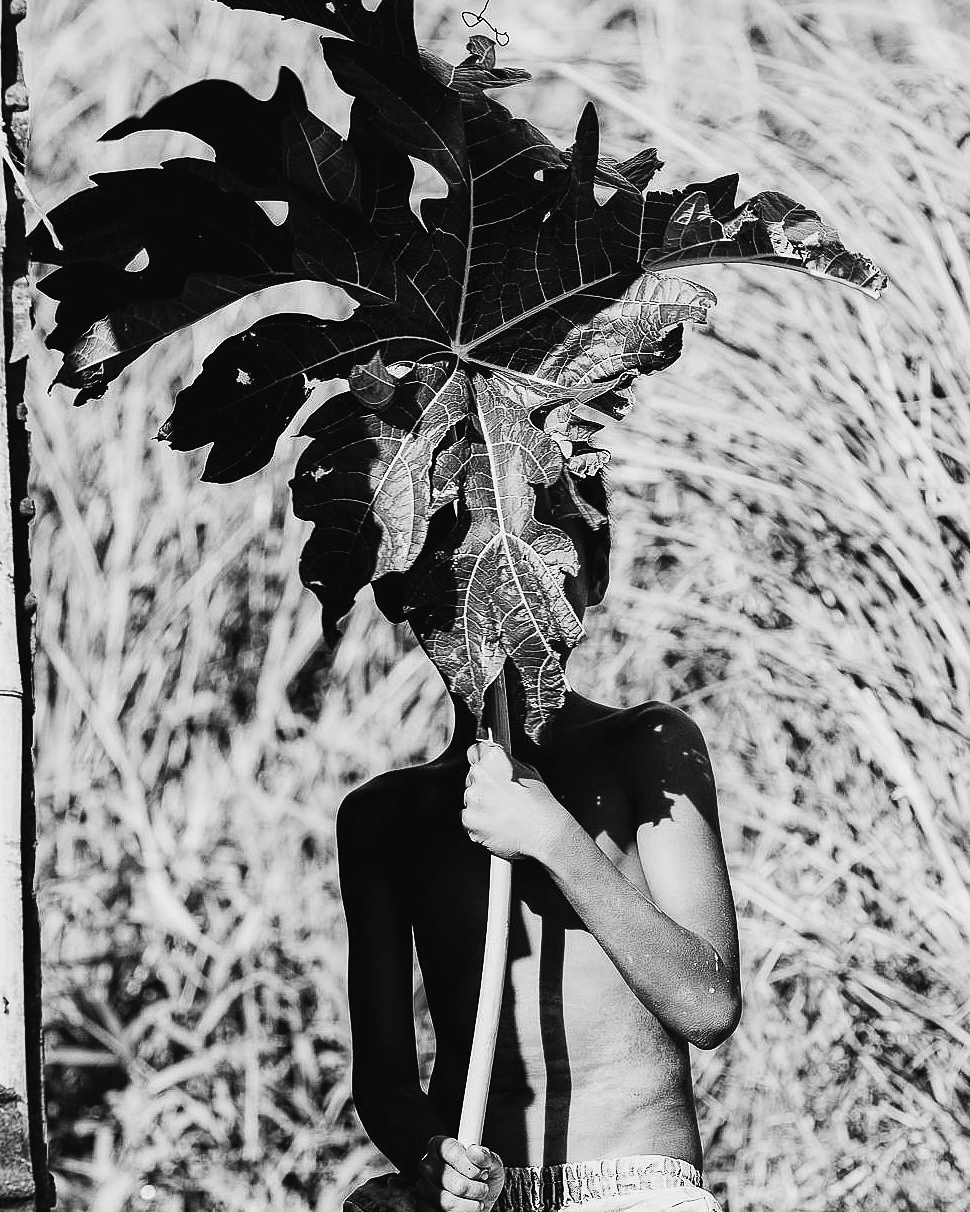
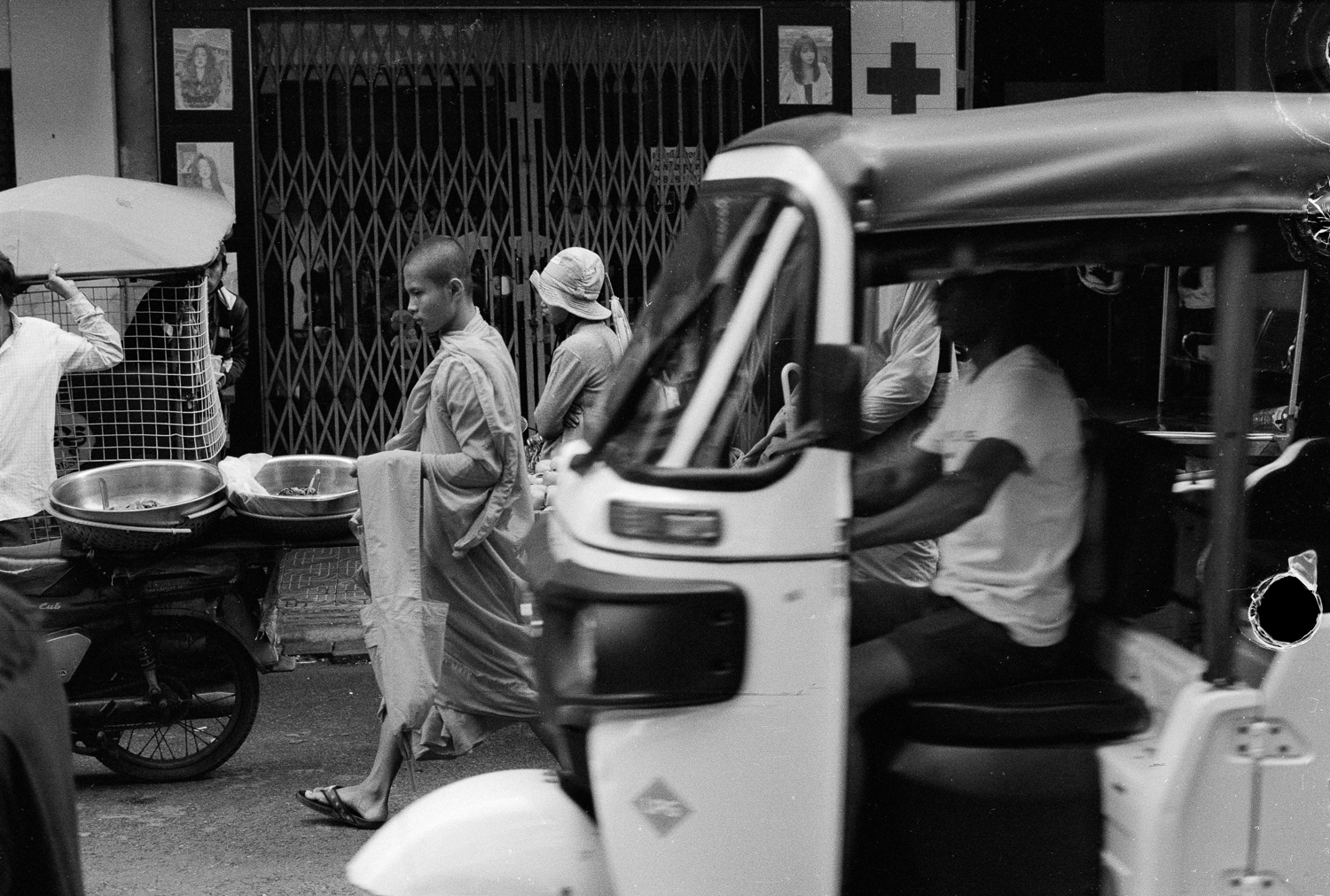
Over the last years “street photography” has become a favorite genre for many photography enthusiasts.
Street photography, what is it?
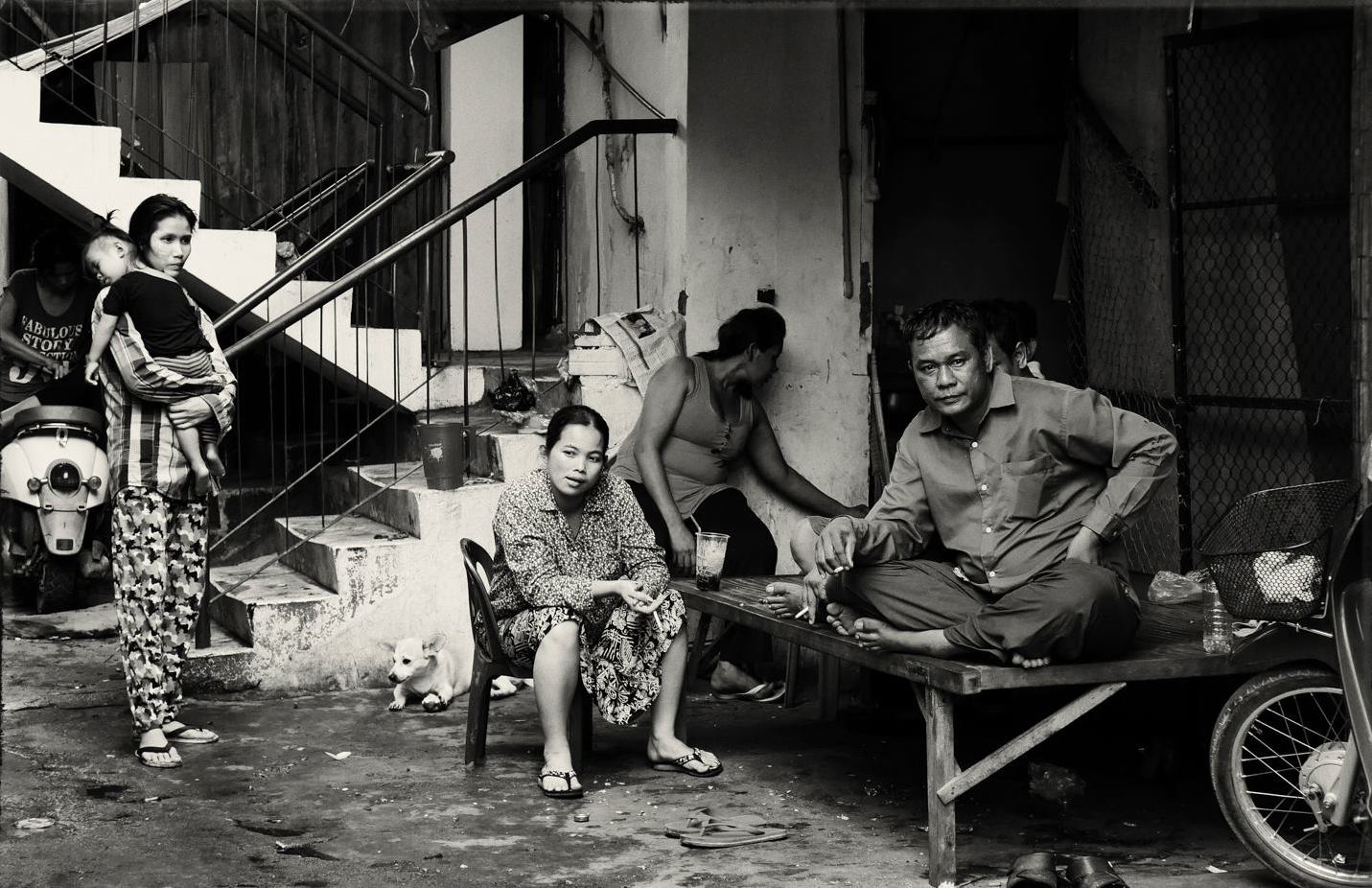
Getting inspired by street photography from Phnom Penh Cambodia
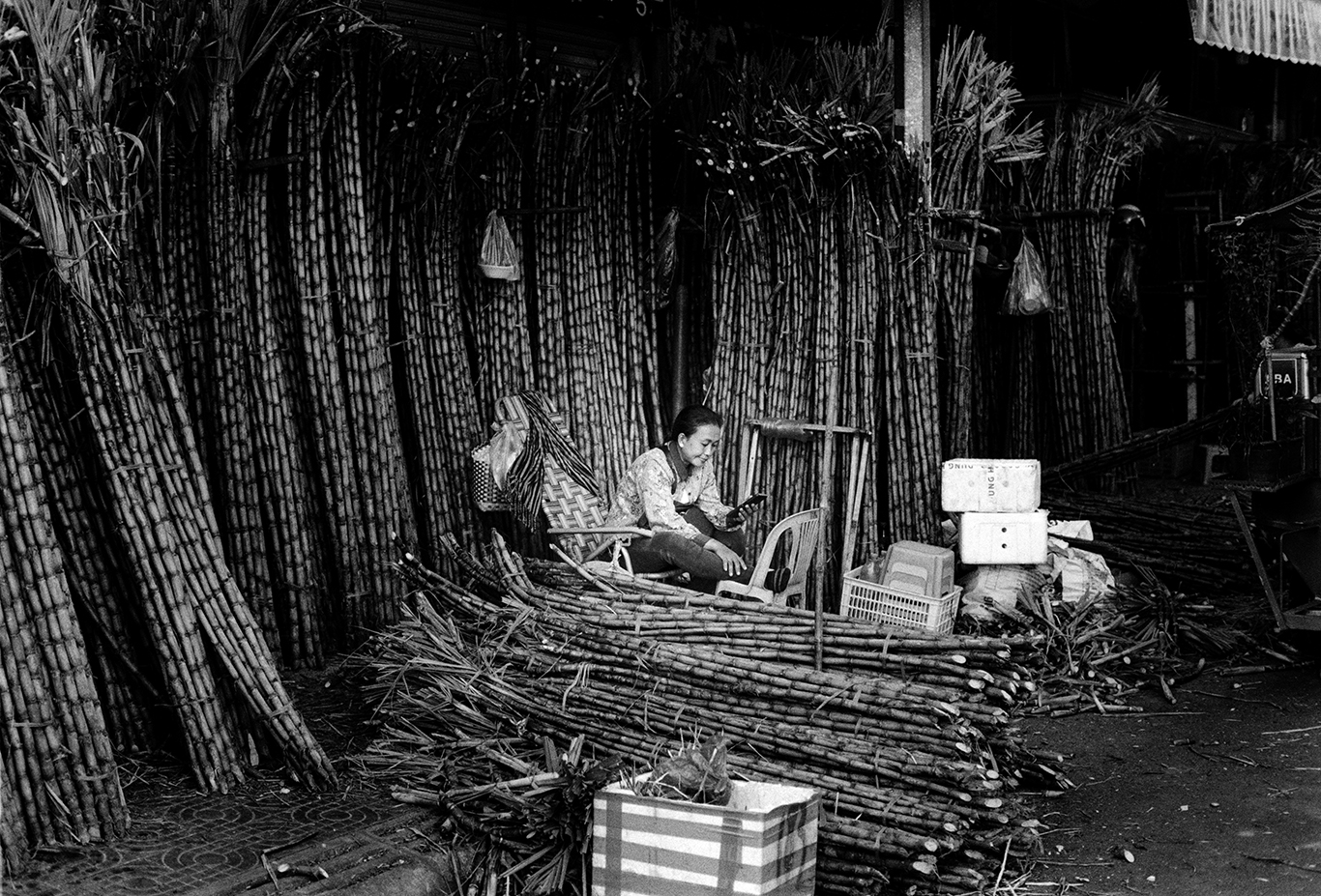
Street photography is especially rewarding to mix-it-in with your portrait other travel and landscape shots during your travels. Street photography does brings a useful sense of purpose to roam the streets, and observe with dedicated focus and alertness to capture a never to repeat reality.
To me, photography is the simultaneous recognition, in a fraction of a second, of the significance of an event. Henri Cartier-Bresson
The hustle and bustle before Covid-19 in the bigger cities around the world were excellent locations for this kind of photo experience. During the 2020 and ongoing 2021 Covid-19 crisis things dramatically changed. Empty streets, people wearing masks, etc.
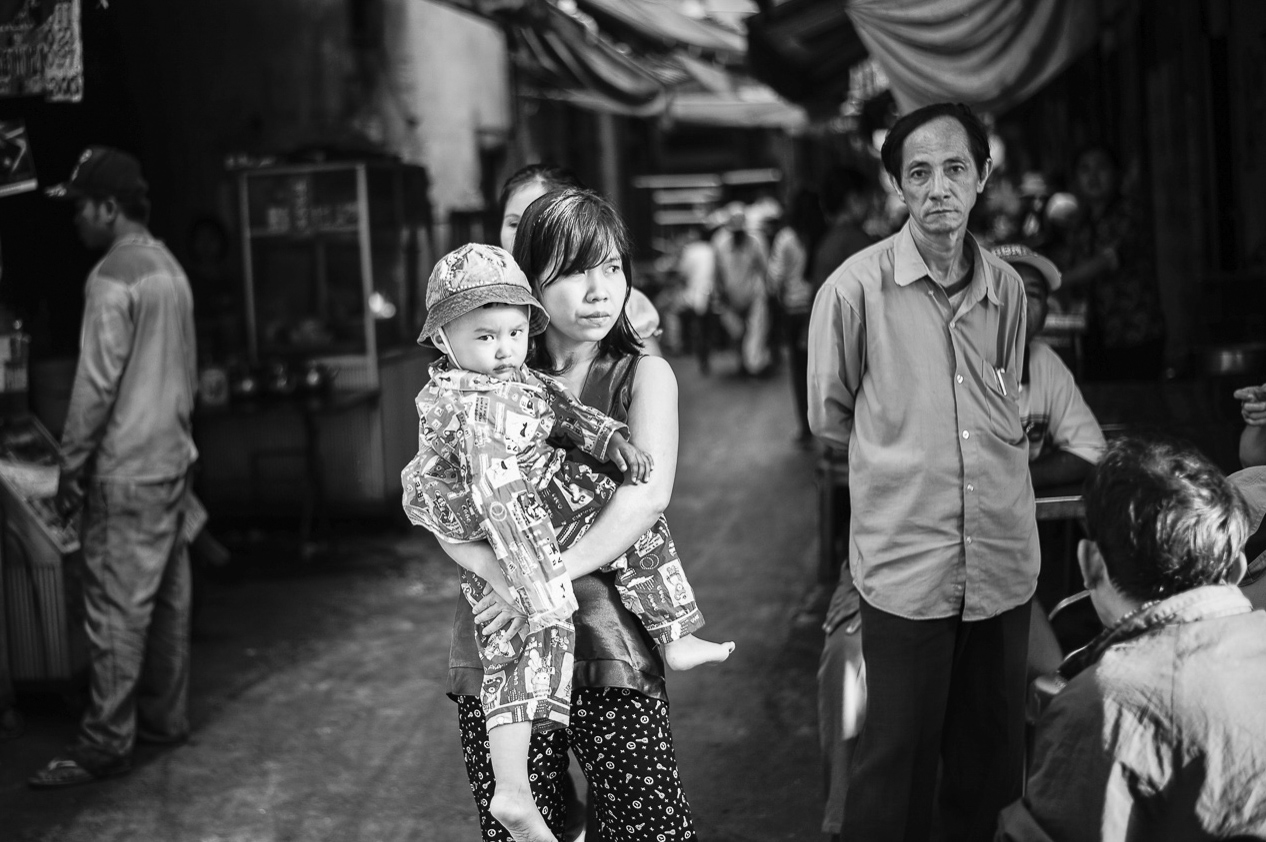
Introspective photography? Sounds scary!
By using or perhaps introducing the term “Introspective photography”, I am thinking about non-confrontational moments captured. Moments that can reflect a (your) mood or a personal feelings or vision.
Yes, this all sounds a bit heavy but looking for a deeper meaning or layer transcending a feeling can be a rewarding thing after all. Introspective photography might just be the solution to make your work more personal. No more posing and fake smiles or thumbs up, please!
Photographing people is something you do together at any moment with your selected subject, it’s you and your subject, and there will be often a moment of surprise, permission, and confrontation, and yes smiles or thumbs up.
Most people in Asia for example will smile or just allow you to take a picture because that is what foreigners do. But we are looking for ways beyond and around this standard practice.
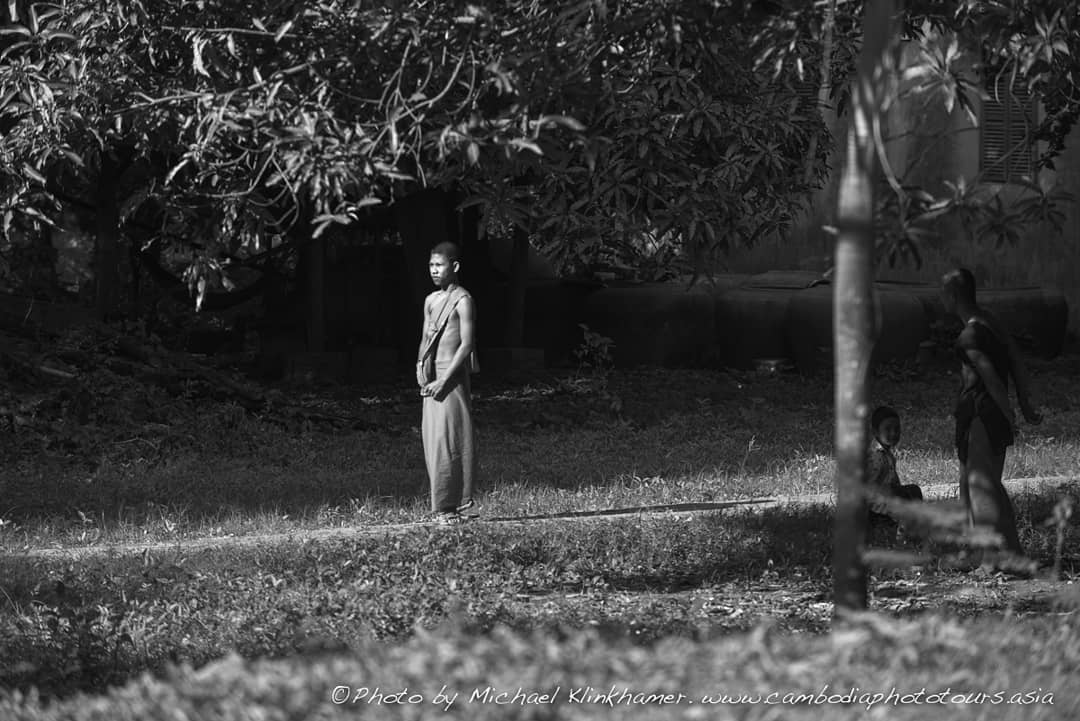
In order to avoid any “confrontation” at all there are ways, to observe, respond, and make your pictures without getting noticed at all. This method requires to see, observe, and look for a possibility for a great image in advance. Using your internal image library (pictures or movies or even music) you can revisit when you see something worthwhile, or just get that moment of clarity to be in- the-moment and react spontaneously.

In some places in the world like New York, Morocco or Amsterdam, people react totally differently to you and might object, question your motives and even get angry. Asking for permission is the first way to work around this but it will kill the spontaneity of the moment. Cambodia is a relief in that regard. Photography is widely accepted and folks are often just as curious as you.
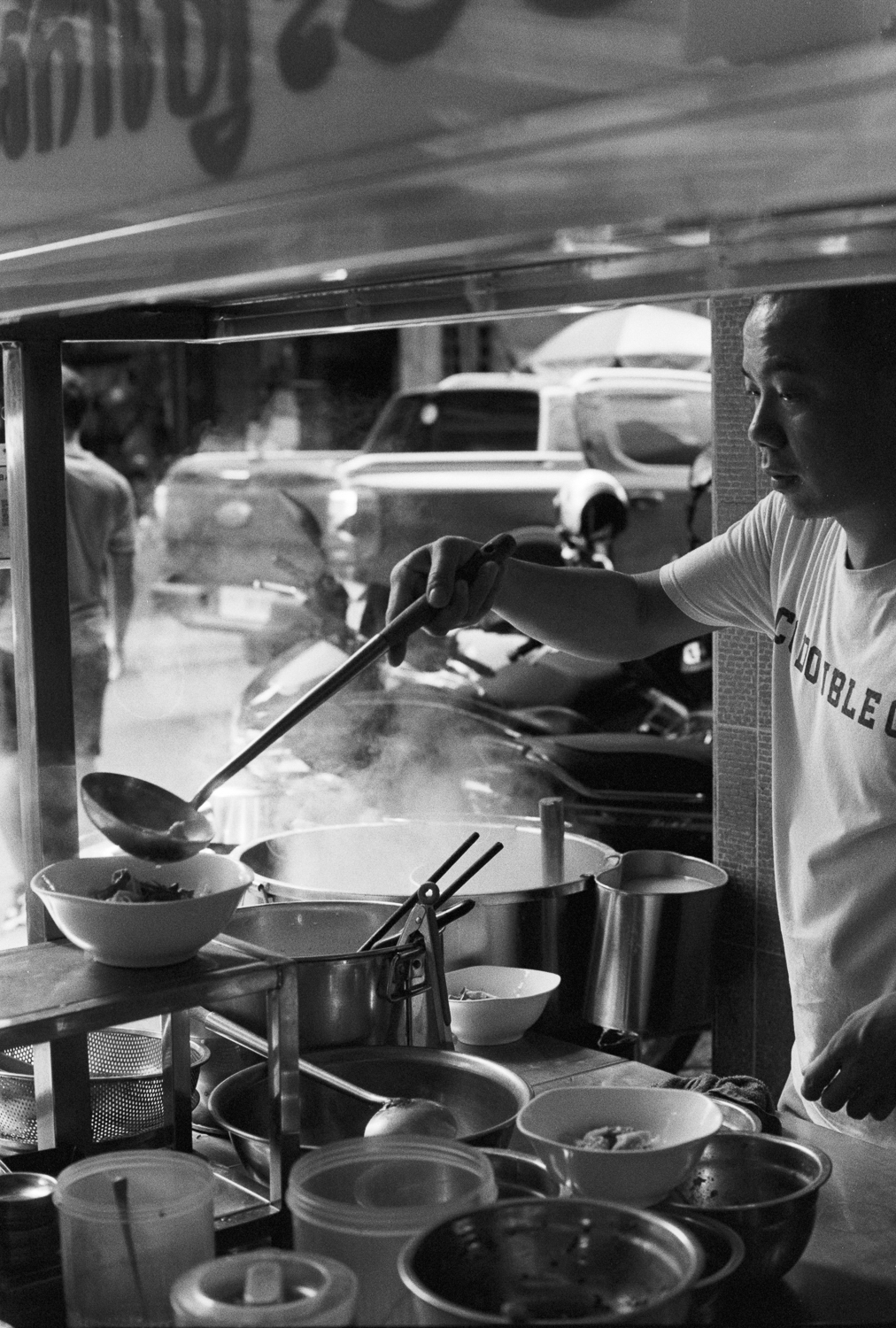
“I only know how to approach a place by walking. For what does a street photographer do but walk and watch and wait and talk, and then watch and wait some more, trying to remain confident that the unexpected, the unknown, or the secret heat of the known awaits just around the corner.”
— Alex Webb“
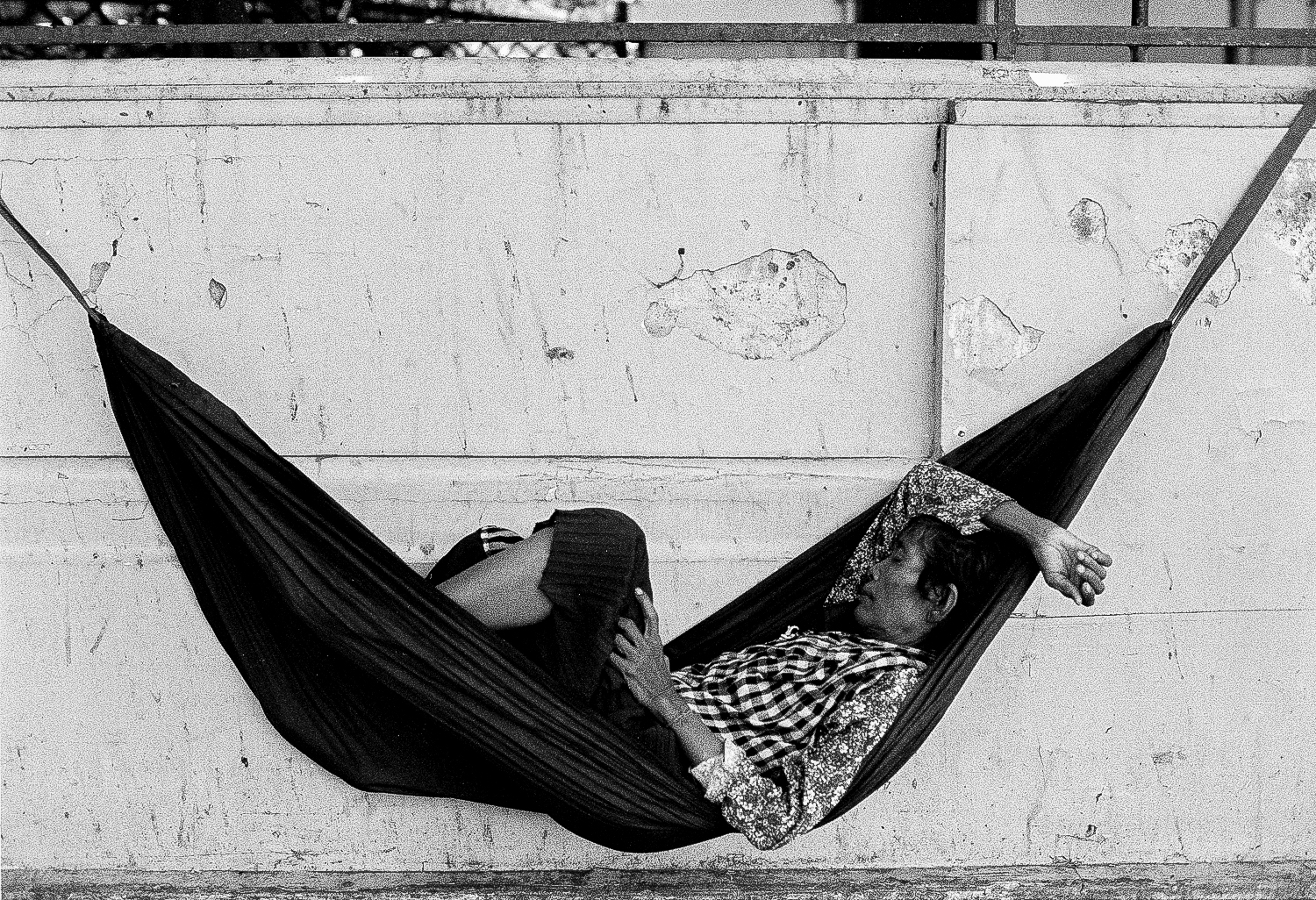
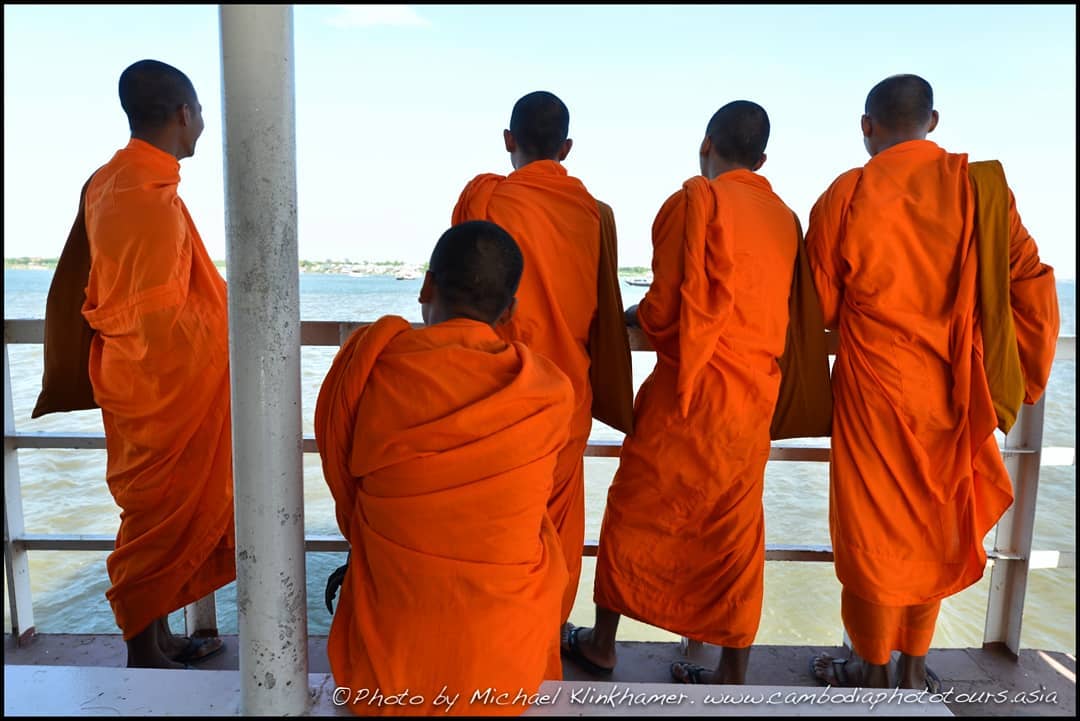
Introspective photos from Phnom Penh-Cambodia.
The challenge of it all is very individual and depends on skill, luck, and personal preference. As with every kind of photography the results matter most. For some it is just to get to unknown places and watching, other cultures. For other photographers it has become a holy grail and a lifestyle to capture incredible moments with a camera.
My seven years in Cambodia allowed me to go out with my camera and clients on a very regular daily basis and do street photo tours. This helped of course in getting to know the place very well and how to “read” people and situations better.
After some time I noticed that I was looking for moments of inner reflection, no posing, no smiles, no thumbs up anymore ~ Michael Klinkhamer
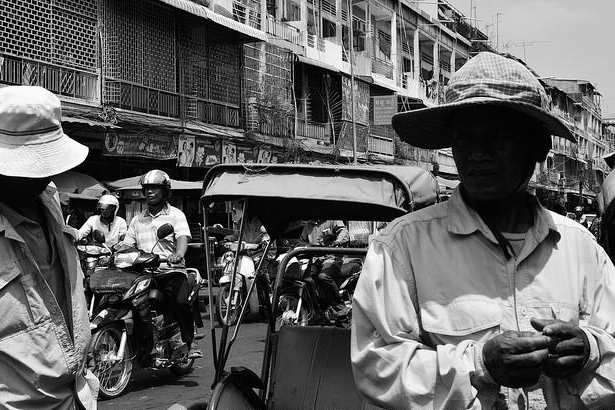
The art of street photography is a lifetime challenge
I was personally learning, growing and experimenting every time we went out, trying to find new ways and different approaches to take pictures and tell my personal stories from the streets of Phnom Penh. Practicing this on a daily basis, sometimes for weeks in a row certainly helps to make you a better photographer. “The more you practice, the more lucky you get.”
With street photography you will have the likes of Henri Cartier-Bresson or Elliot Erwitt or more recent Alex Webb as photographer examples of the highest level in what you can do what you can do in the streets with your camera. Look those people up and look at their photo work, interpret them good and start making your own pictures with them as your inspiration until you find your own sweet spot.
The photographer is an armed version of the solitary walker reconnoitering, stalking, cruising the urban inferno, the voyeuristic stroller who discovers the city as a landscape of voluptuous extremes. Adept of the joys of watching, connoisseur of empathy, the flâneur finds the world “picturesque.
Susan Sontag, 1977
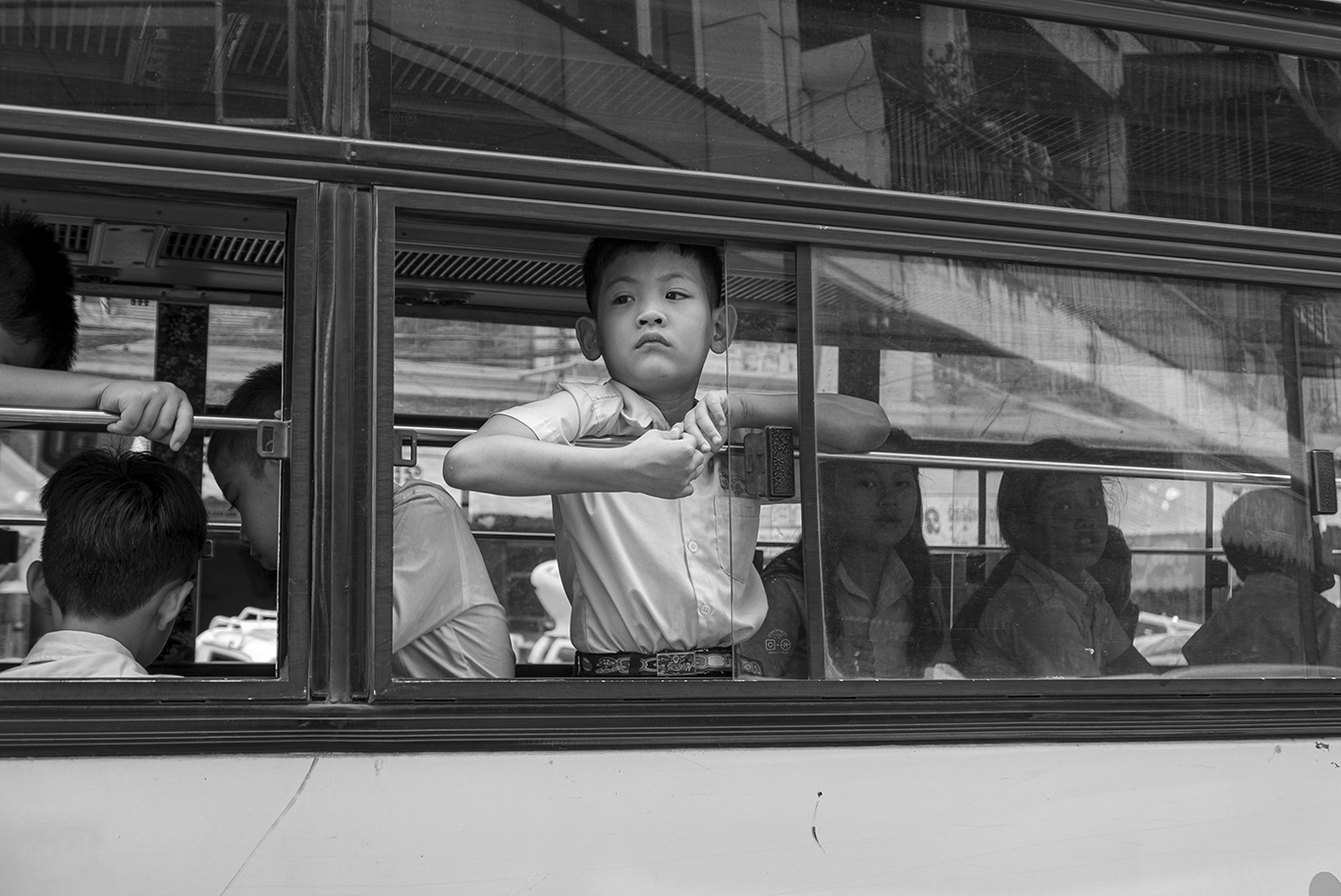
A satisfying approach to street photography I like to show here on my blog is to take pictures of scenes with people, but without interference or interruptions. Observations without being much noticed and delivering a intimate feeling and a profound story.
See it, shoot it and be gone can work for you and me.
The art of street photography is a lifetime challenge and a lot of fun when you get better at it. That makes it so interesting to do. Luck, your mental and physical state, alertness and observation, a gut feeling, and often just being in the right place at the right time are the key components. Another factor is carrying a camera at all times, or a smartphone these days.
Dealing with different cultures and allowing yourself to get “lost in time” is very rewarding. It brings you that special feeling of freedom, excitement and touching into certain creative “zone”.
Introspection, and what does it mean in photography?
“The whole point of taking pictures is so that you don’t have to explain things with words.” Elliot Erwitt
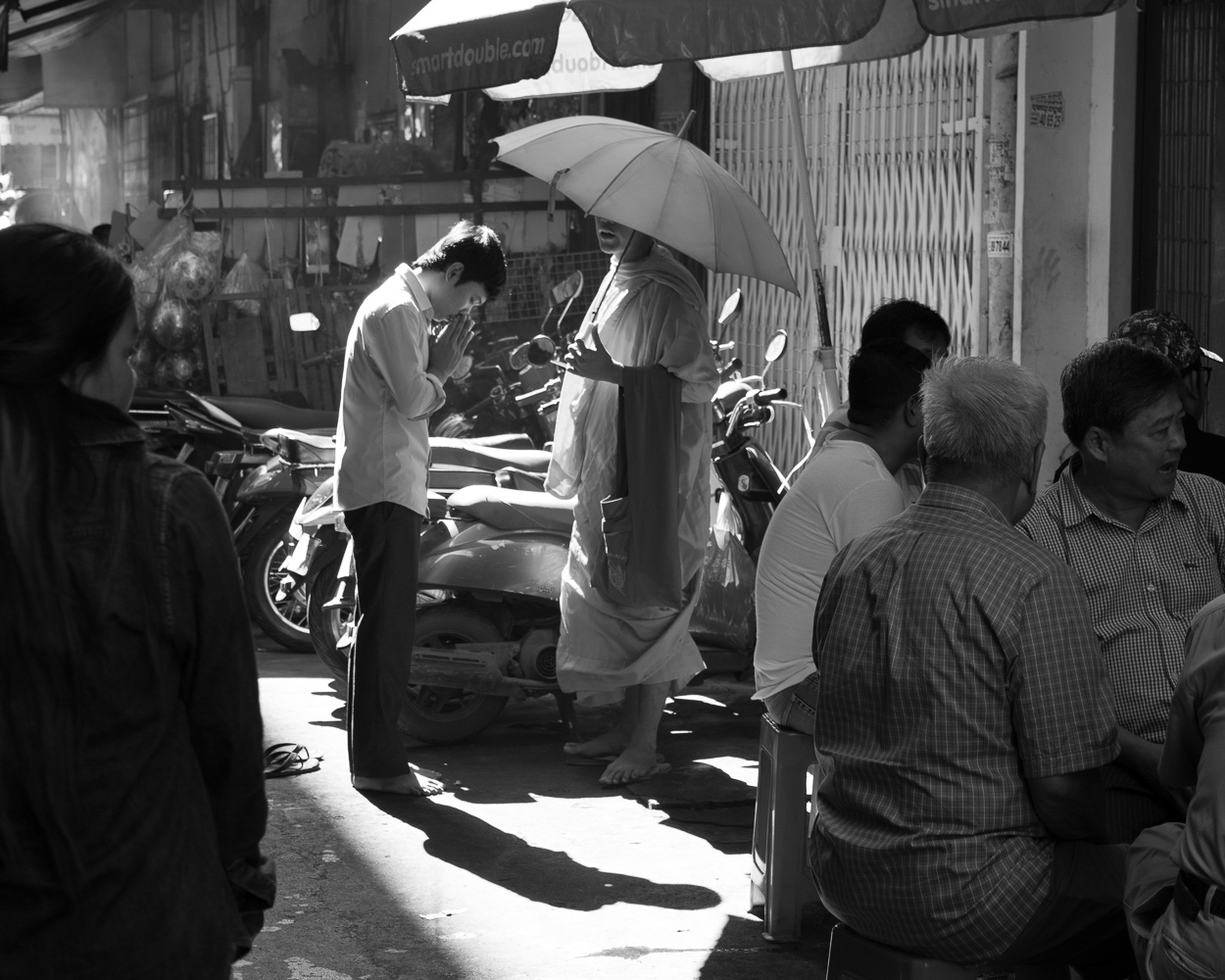
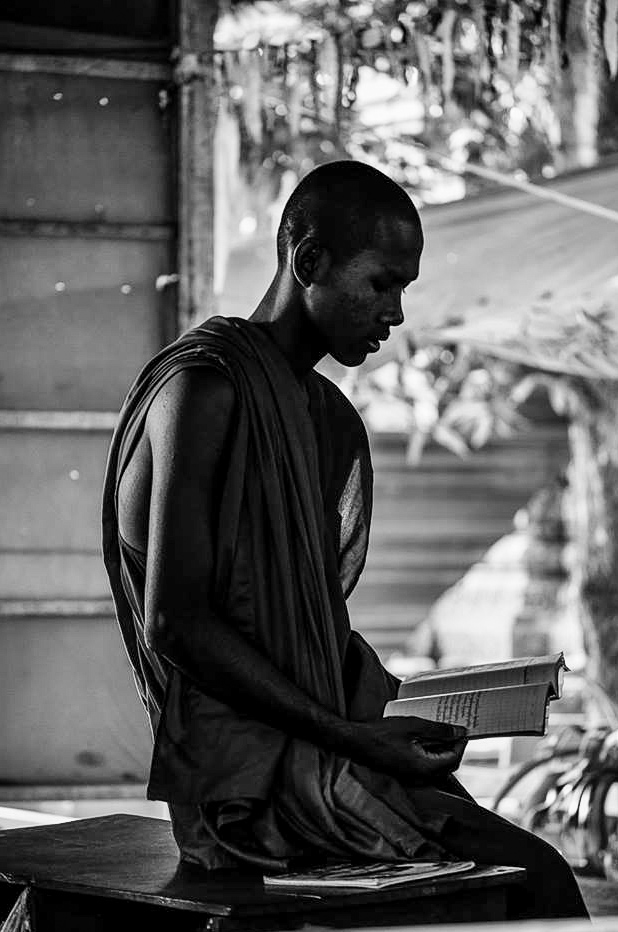
I personally love Elliot Erwitt’s work for he is so right about that quote above. Humor is a big part of his work, Something I like to look out for in my photography. Humor is in the street they used to say.
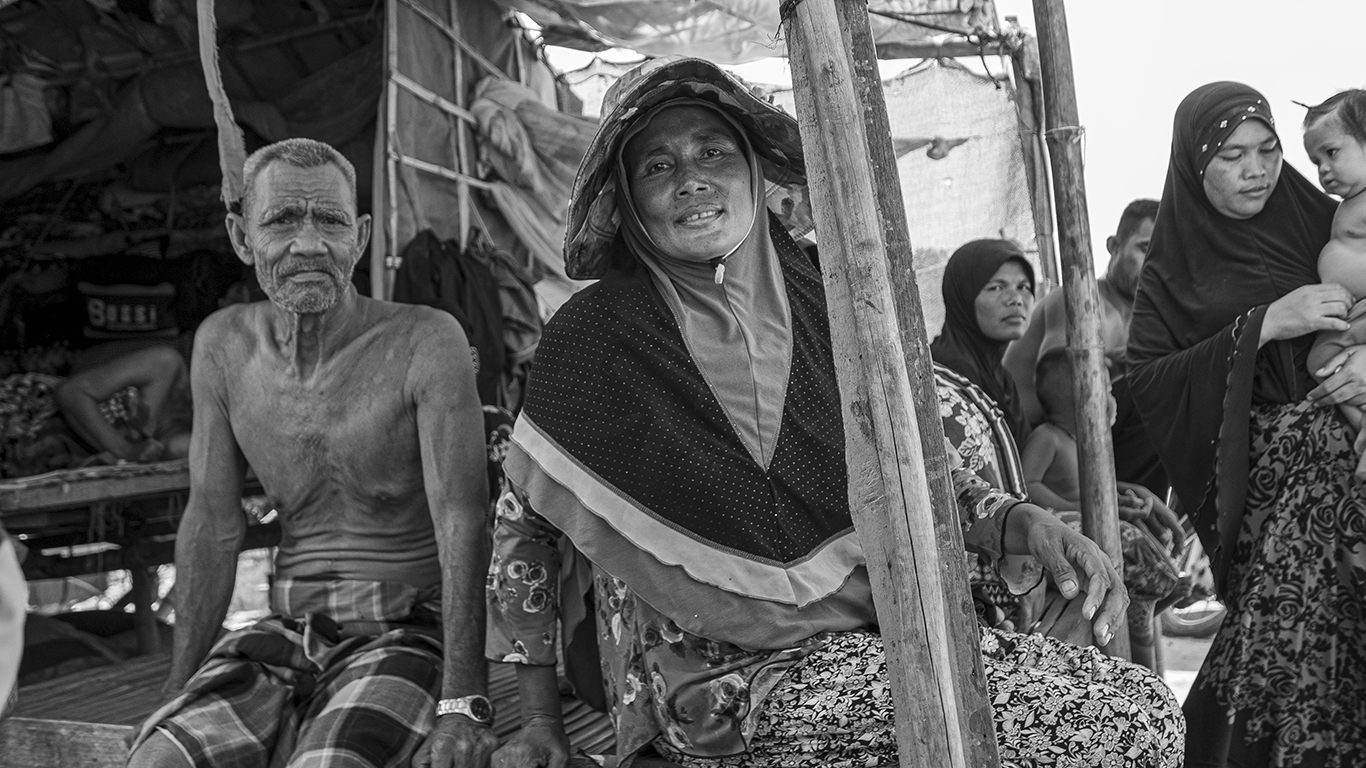
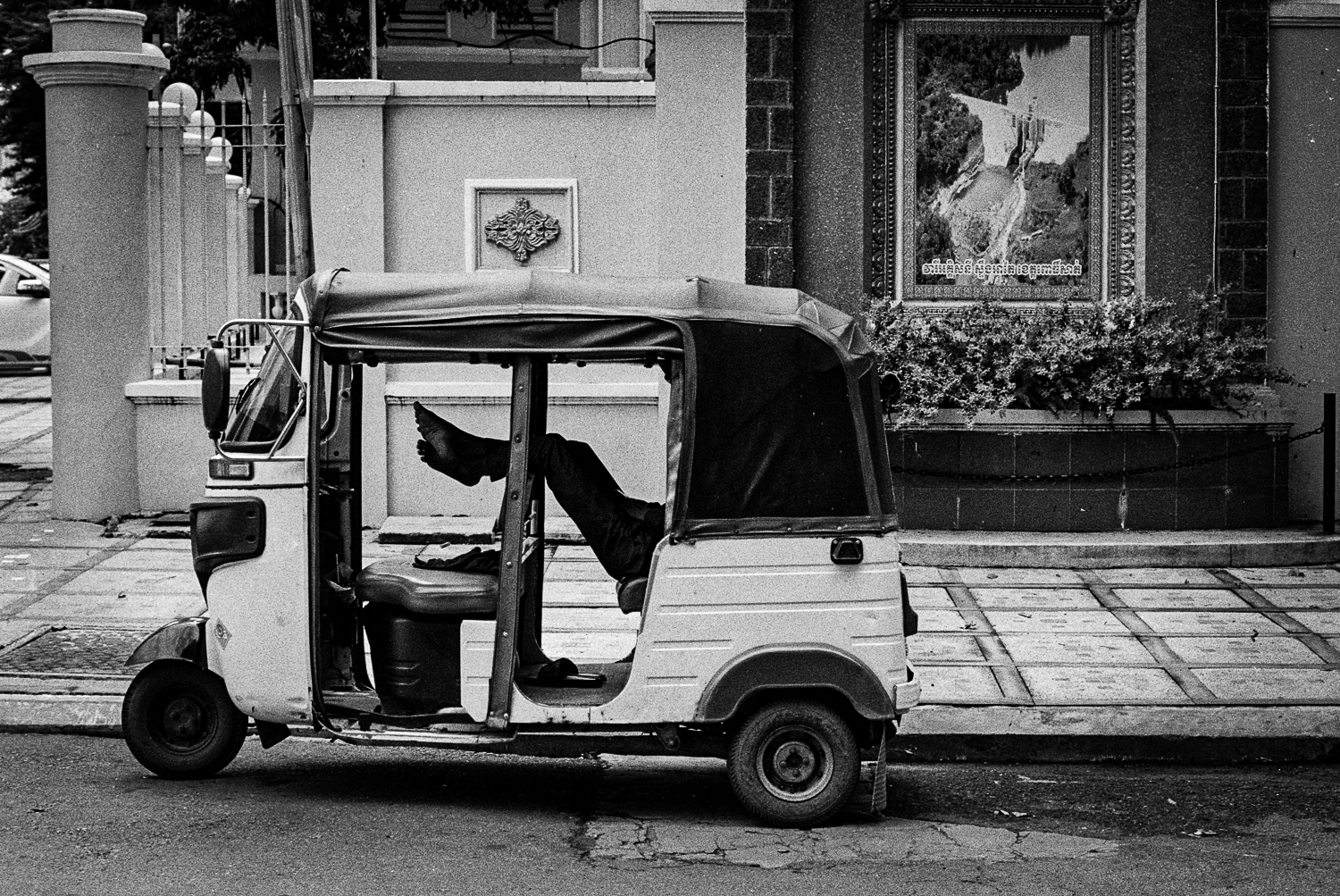
It allows multiple ways of carry, with twin Toron handles for a chic elbow carry and a strap for practical over-the-shoulder wear.
Model: Sre Khmer
Location: Areksat-Phnom Penh
So, here I go some more; For most locals living and working in a big world city is to face the challenges that come with the daily situations, and dealing with hardship, pollution, noise, the constant heat, the pressure, poverty.
The waiting, the moment of concentration and contemplation, the moments “‘in between” of introvert acceptance.
I found that keeping a certain distance between me and the subject, in most cases the busy locals allowed me to tell a true story, no disturbance, no interference or confrontation. No fake smiles.
Stepping back a few meters and allowing to incorporate more background or foreground in the frame to allow more context works good. Incorporate the location, to allow the light and shadow parts to play part of the whole picture. Looking for multiple elements and waiting for the right gesture are all part of the trick in the world of street photography.
Of course, this does not mean you won’t have any connection with the subject and you won’t ask for permission or share laughter and joy. Especially in Cambodia people a friendly and open to meet.
I prefer to shoot first and talk later or do the opposite. Say, hello and wait for the novelty of your presence wears off, then once people resume to what they were doing before , make your pictures as you noticed in the beginning.
Yes, shooting in the streets demands ultimate flexibility, and making street pictures is often a mixed bag of moments and wonderful encounters.
To answer the question if street photography will make you a better photographer? I will say most definitely, Yes!
It makes you focus, be ready and observe, not only to what is happening in front of you. You will learn to sense the atmosphere, read people and watch the light, the movement, the gestures. It’s your challenge to put it together into one or a few perfect images. Pictures that reflect what you feel, see and like to show.
Street photography will sharpen your eye and sensibilities. All of this you can use in to other kinds of photography, like, reportage, portraiture or fashion.
It a way all photography styles or genres are connected and have many overlaps. Try it!
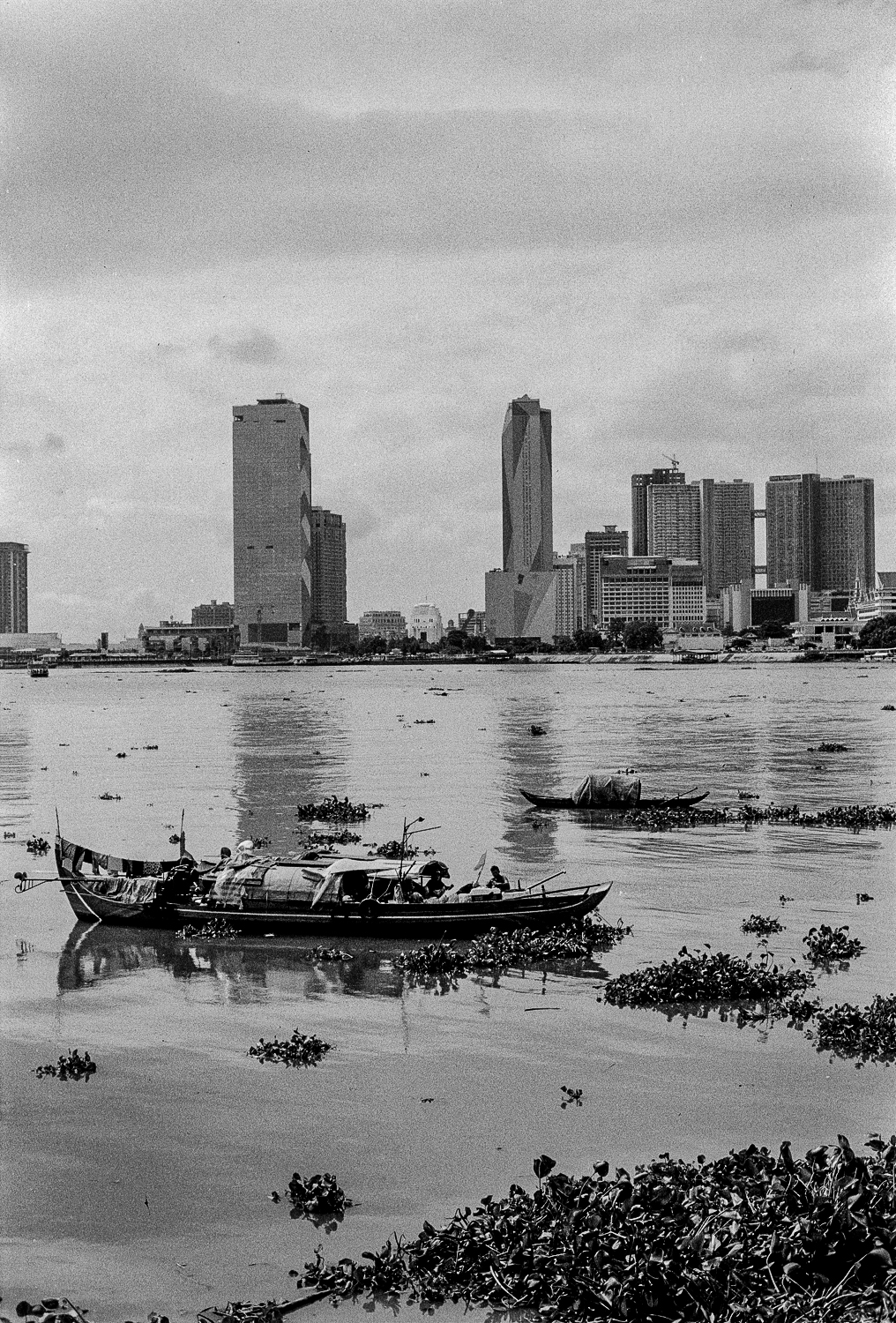
“The most important piece of equipment in your bag is your attitude.” Joe McNally
What lenses, what settings, and how close do you like to go in on your subject? What do you intend to show and in what way?
From a camera technical perspective, I like using a normal 50mm or 40mm lens, perhaps 35mm on a full-frame, or 27mm lens on a crop sensor camera.
Using a super wide lens means you have to go in even closer, or be in a crowd. This also results in wide angle distortion.
A longer tele lens will result in a more distant, and more compressed perspective.
I also like to use tele lenses to get a more compressed and cinematic feel. It is also a lot easier to shoot with a 200mm or so, but you won’t have that personal up close connection into the pictures.
A lot of photographers on my photo walks used a 28-200mm do it all lens with them. This is great for when you travel and carry-on luggage weight is in consideration.
Again there are many other ways to try and find your preferred sweet spot to get nice images, and it is a personal experience, how to tell your photographic story.
At this time of writing I am based in Amsterdam-Holland. Give me a call when you are around this summer of 2021. https://klinkhamer.calltheone.com/en/dutch-photo-tours
Here I publish a selection from my extended Cambodian street photography archive. I will update it regularly, you can also follow me on Instagram https://www.instagram.com/michael_klinkhamer_photo_tours

